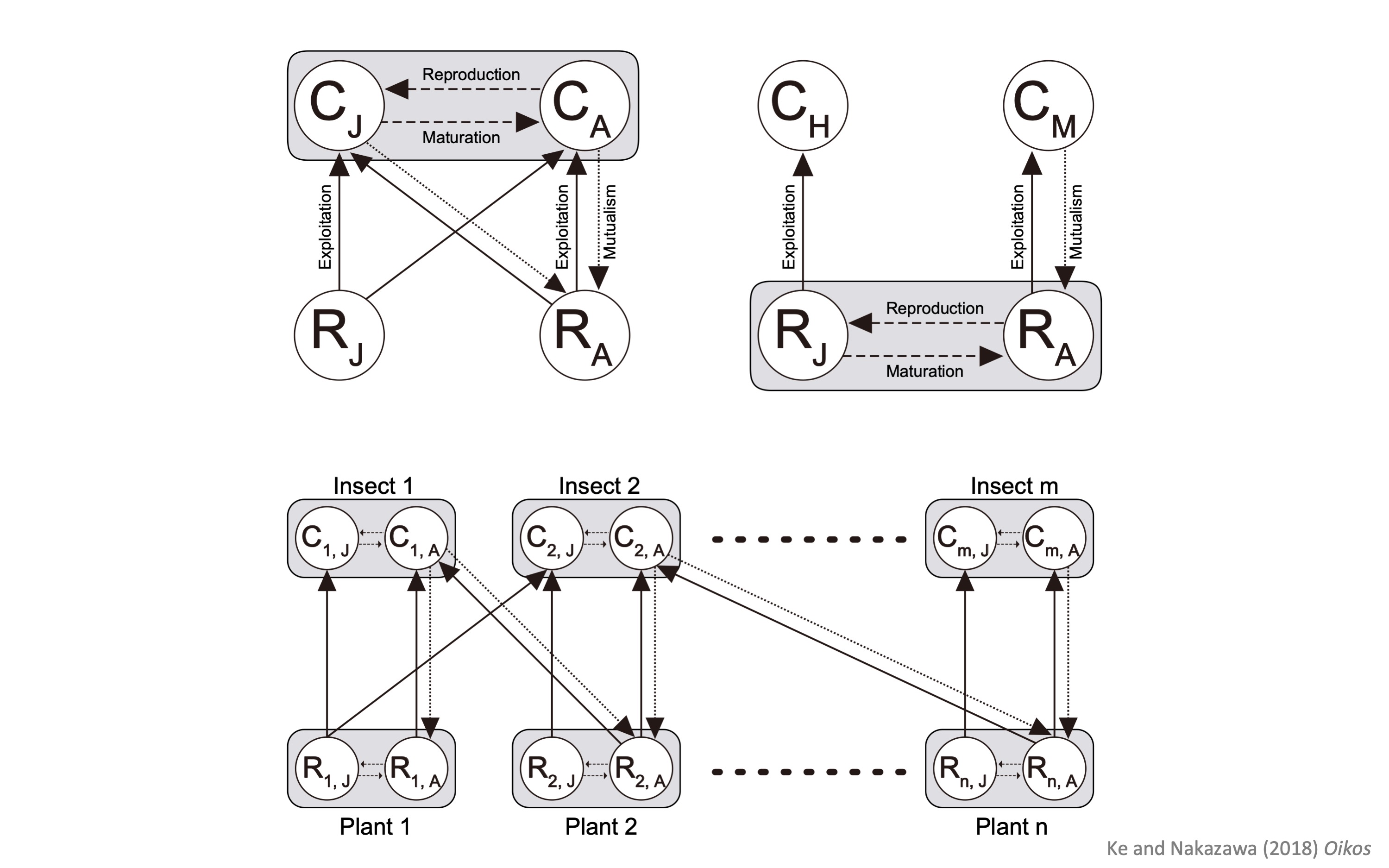Back
Stage dependent species interactions

The strength of species interactions is often assumed to be fixed through time. However, greater awareness of the temporal complexity of ecological communities has urged ecologists to challenge this viewpoint. In particular, there is a pressing need to understand how species’ phenology, ontogeny, and stage structure modify the way interactions are coordinated in time and their impact on community structure.
Our lab combines both empirical and theoretical approaches to develop a temporally-explicit perspective of community ecology. For example, we had developed a model that integrates stage-structured food-web theory with the theory of hybrid community (i.e. mixture of different interaction types), considering that not only diet but also interaction type often changes because of ontogenetic niche shift (e.g. the metamorphosis of pollinating insects, in which juveniles and adults are herbivores and pollinators, respectively). With this model, we suggested that ontogenetic antagonism-mutualism coupling stabilizes community dynamics in that it increases the potential for species coexistence in unproductive environments while improving community resilience in productive environments (Ke and Nakazawa, 2018, Oikos).
We have also studied the temporal dimension of species interactions using plant-soil microbe interactions as a model system. For example, we developed a model of plant-soil interactions where seedlings and adults were affected by microbes differently and have different effects on nutrient cycling (Ke et al., 2015, New Phytologist). We have also combined aerial photo analysis, high-throughput sequencing, greenhouse experiments, and ecological modeling to study how plant-soil microbe interactions change with the length of soil conditioning and decay (Ke et al., 2021, New Phytologist; Ke and Levine, 2021, The American Naturalist). We hope to further develop this research theme in the future.


